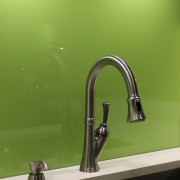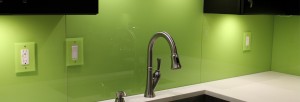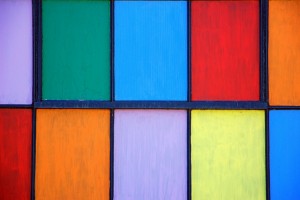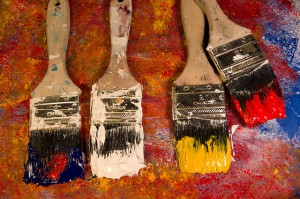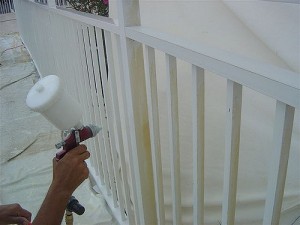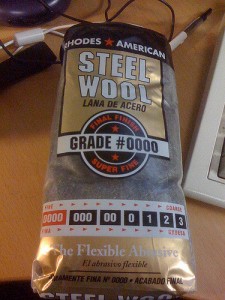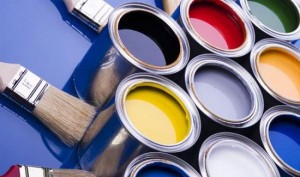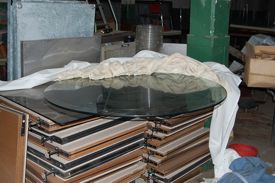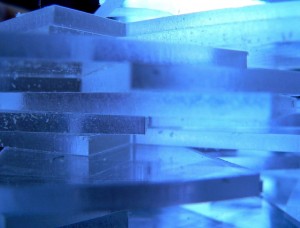Using Plexiglas™ with Glassprimer™ glass paint
Plexiglass™ as a glass substitute
In some cases, Plexiglas™’s lightweight, transparent composition makes it a better choice for surfacing or resurfacing. As an example, you may want to add glass fronts to your kitchen cabinets, but the weight of the glass would make that difficult. You can laminate existing cabinet fronts with Plexiglas&153;, and you can backpaint it with Glassprimer™ glass paint.
It’s hard to argue with Plexiglas™ as a material choice. It is inexpensive and readily available. You can cut Plexiglas™ into any shape, and its weight is only a fraction of comparably sized glass. Unlike tempered glass, you can cut Plexiglas, which means you don’t have to move electrical outlets.
One advantage that glass maintains over Plexiglas™ is the heat resistance of tempered glass. Plexiglas™ is not heat resistant and is not suitable for use around the stove. If you want a backpainted backsplash near the stove, glass is still your go-to material choice.
If you intend to create a backpainted Plexiglas™ surface, you can measure and precut the material before you paint it. Precutting the surface allows you to avoid damaging the paint after it’s been applied to the Plexiglas™.
The surface preparation for Plexiglas™ is no different than the surface preparation for glass. To prepare the surface for painting, washing it with alcohol and fine steel wool. Dry the surface with ordinary paper towels and apply the Glassprimer™ glass paint using your preferred application method. Plexiglas™ can develop and hold a static charge. This isn’t dangerous, but it is attractive to dust, lint and hair.
The steel wool you use to clean the Plexiglas™ will lightly scuff the surface, improving the adhesion of the Glassprimer™ glass paint. As with glass, use thin coats to cover the Plexiglas™. The thinner the coat, the better the final results will be. Thin coats of paint also help you avoid drips. Wait until each coat is dry before applying another coat. You can apply as many coats as you like, but the best results are often achieved with 3-8 coats of Glassprimer™ glass paint.
You can also mount your finished project with neutral-cure silicone adhesive. You can also use mastic, but silicone adhesive is lightweight and very easy to work with.
If you’d like some inspiration for your glass paint project, please visit the rest of our site. If you’d like to purchase Glassprimer™ glass paint, please visit our online store .
Photo Credit: Pedro Ribiero Simoes, via Flickr.com



